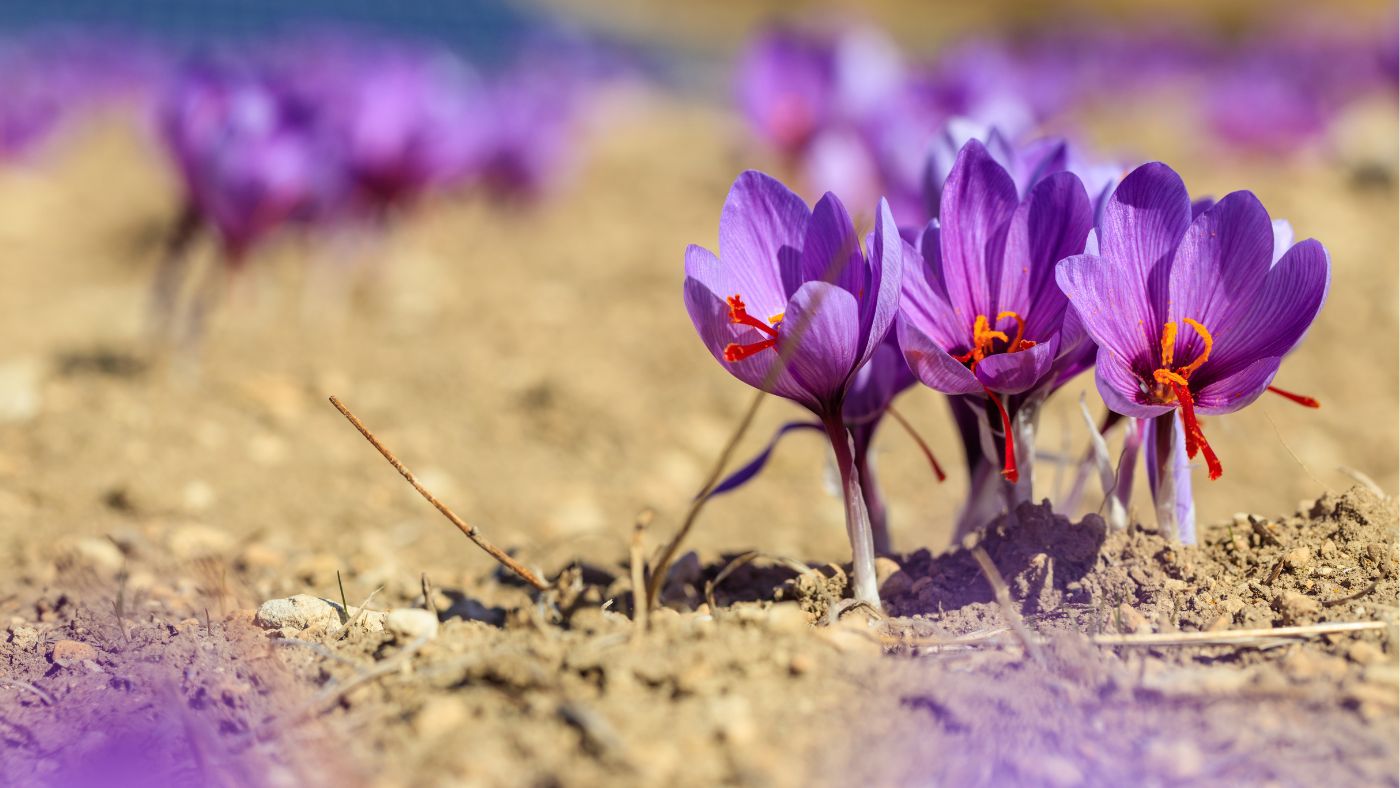Saffron is a wholesome plant in itself- flavour, color, fragrance, and properties that go beyond the scope of expectations. It has been a kitchen favorite since ancient times and carries with itself a rich history which makes it all the more precious even today.
Here are 21 interesting facts about saffron that you might not know:
- Saffron is a spice derived from the flower of the Crocus sativus plant, which has also come to be known as the “saffron crocus.”
- The name Saffron roots down to the Arabic word zafran meaning yellow.
- In olden times, the fabric of traditional robes was dyed using the golden color from the crocin chemical that is found in saffron. In fact, after Buddhists adopted this peculiar color as an official shade for their attire.
- The famous Cleopatra was very fond of saffron and used this as a cosmetic.
- In Greece saffron was used by the courtesans as a perfume because of its subtle yet long-lasting fragrance.
- Dried stamens of saffron last long with their fragrance and flavour intact for a minimum of 2 years. Their purity is guaranteed over the powdered form where chances of adulteration are high.
- The thin strands of saffron continue to infuse flavours for up to 12 hours when mixed with hot liquid.
- The deep red color signifies how good the saffron is. The depth of the red shade is directly proportional to saffron's quality.
- Rome romanticized saffron to the core. Heavily used in luxurious baths and corridors to render its fragrance since the galore times.
- 75000 crocus flowers are required to prepare one pound of saffron!
- Procurement of saffron stigmas from its plant crocus is done by hand, still!
- Saffron remains the most expensive spice globally.
- There is no mechanical way to harvest saffron crocus. Its reproduction is dependent on a careful plantation.
- Each country/ region has its own grading system for categorising saffron. It factors in aroma, color, and flavor as not all saffron is similar in nature.
- Dried saffron is constituted of 11% protein, 65% carbohydrates, 6% fat, and 12% water.
- Apart from being an exotic spice, saffron is also well known for its anti-oxidant properties that prevent many diseases and safeguards health.
- If added to a recipe, no other condiment of any quantity can take over or dilute aroma infused by just a few strands of saffron.
- Saffron enriches food with energy as it comes packed with nutrients like iron, copper, potassium, manganese, zinc, copper, and magnesium.
- Saffron provides instant relief to the common cold and cough.
- During the epic times of olden age, saffron was also used as an instant cure for battle wounds in war zones.
- Saffron is known as a sacred element in curing hormonal imbalances in the female body.
This is not all as the facts about saffron remain ever so charming and interesting as well as widespread and as it seems to continue too because of its encompassing nature.
